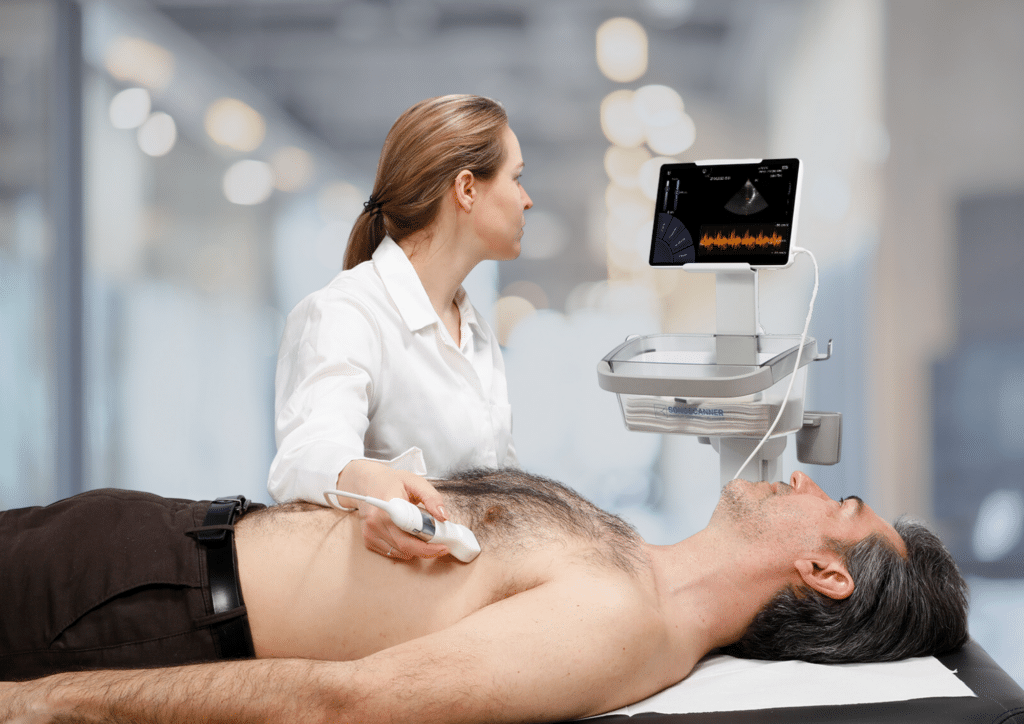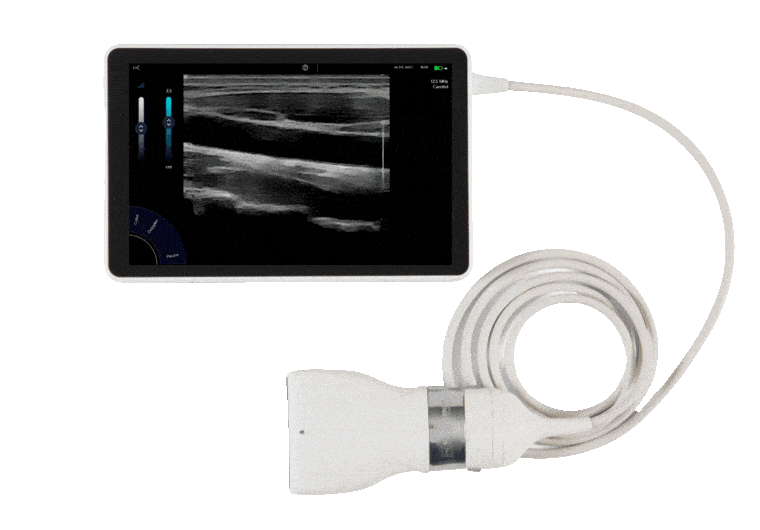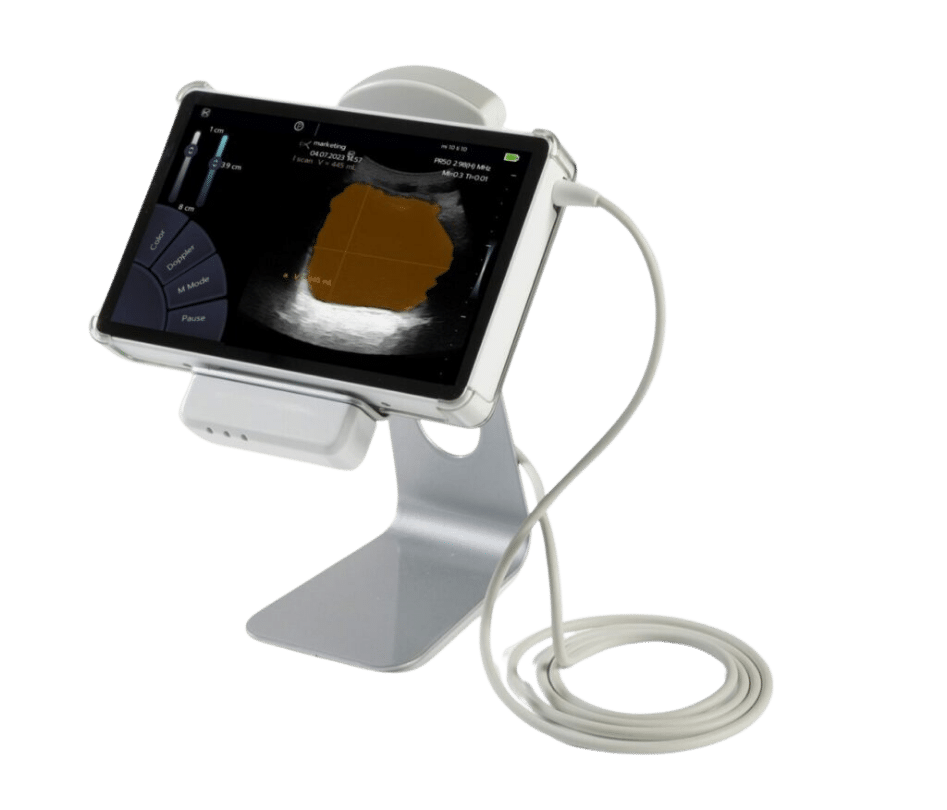Artificial Intelligence and Ultrasound: The Sonoscanner Guide 2025
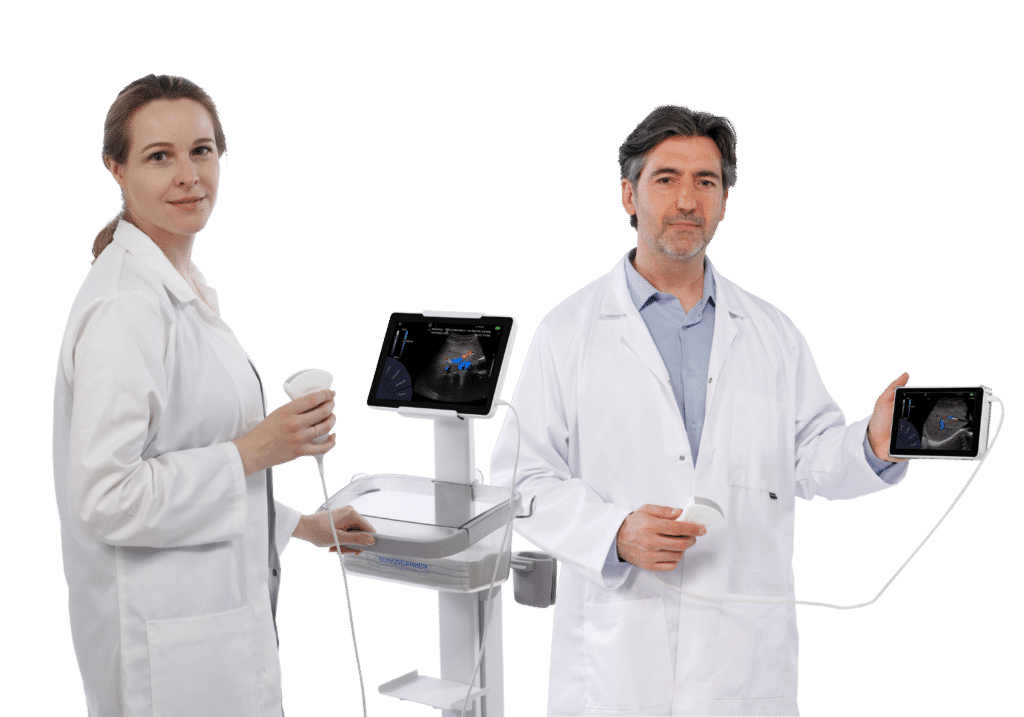
How is AI transforming ultrasound?
Artificial intelligence is redefining ultrasound by enhancing the precision, standardization, and efficiency of examinations. It enables the automation of key measurements, thus speeding up the workflow. At the same time, adaptive optimization algorithms automatically adjust imaging parameters to suit each patient, ensuring optimal image quality in real time.
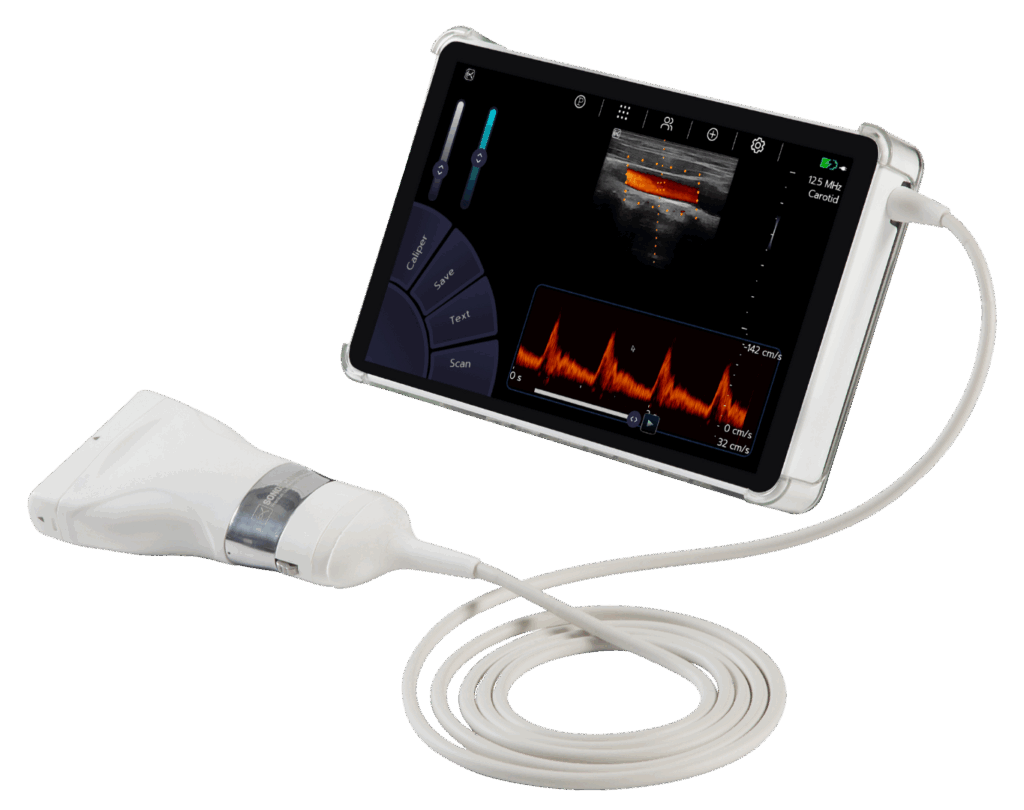
Sonoscanner U-Lite PRO Ultrasound Machine
AI at Sonoscanner: Towards Enhanced Ultrasound
To provide ultrasound machines at the cutting edge of innovation and support the evolving practice of its users, Sonoscanner has placed artificial intelligence at the heart of developing its new features.
Thanks to Sonoscanner’s exclusive AI, experience faster, more precise, and more intuitive ultrasound exams, designed to optimize your daily diagnostics.
Automated Measurement of LVEF (Left Ventricular Ejection Fraction)
The artificial intelligence integrated into Sonoscanner ultrasound machines enables automated evaluation of the left ventricular ejection fraction (LVEF). This feature provides a fast, reliable, and reproducible measurement of cardiac function, which is essential for diagnosing cardiovascular diseases, while reducing dependence on operator expertise.
LVEF by AI on the Sonoscanner PRO Series
Live Image AI
The Live Image AI feature automatically adjusts image settings in real time, taking into account detected tissue characteristics. This ensures a uniform and well-contrasted image without any manual adjustments, making immediate interpretation easier.
Auto IMT (Intima-Media Thickness)
The Auto IMT technology enables automatic measurement of the intima-media thickness of the carotid arteries. This key parameter in screening for various vascular diseases is calculated in a standardized manner with enhanced precision, improving both the speed of the examination and the quality of patient follow-up.
Bladder (Automated Measurement of Bladder Volume)
The AI-assisted Bladder feature enables fast and reliable measurement of bladder volume. By automatically detecting the bladder contours, it minimizes manual adjustments and reduces the risk of errors. Particularly useful in urology, geriatrics, and intensive care, it supports clinical decision-making in cases of suspected urinary retention.
AI-Enhanced Color Doppler
AI also helps enhance Color Doppler performance by automatically adjusting parameters (PRF, gain, filters) to achieve more stable, sensitive, and less noisy blood flow imaging, even under challenging technical conditions.
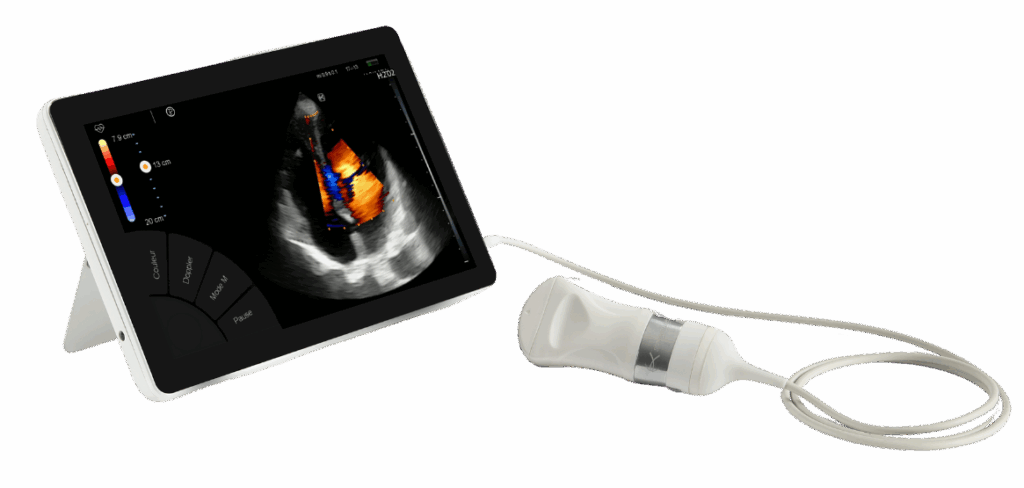
Auto Flow
The Auto Flow feature uses AI to automatically detect and adjust the orientation and insonation angle during Doppler exams, thereby optimizing blood flow visualization. This simplifies vascular examinations and improves the reliability of hemodynamic measurements.
Energy Consumption Optimization Powered by AI
Thanks to intelligent resource management, AI optimizes the device’s energy consumption by adjusting computing power and screen brightness according to usage. This approach significantly extends the battery life of portable ultrasound machines, a major advantage for mobility.
To learn more about the AI features available across the Sonoscanner product lines, feel free to contact us.
The Benefits of AI for Practitioners
Thanks to integrated artificial intelligence, Sonoscanner’s portable and ultraportable ultrasound devices provide a faster, more reliable, and more intuitive examination experience. By automating key measurements and optimizing imaging settings in real time, AI reduces the complexity of manipulations and guides the operator Practitioners gain efficiency, improved work comfort, and diagnostic accuracy, while ensuring standardized and high-quality patient follow-up.
